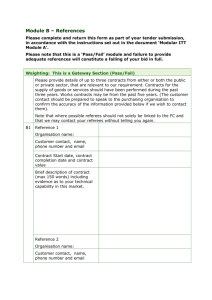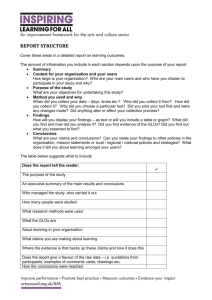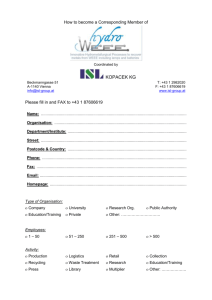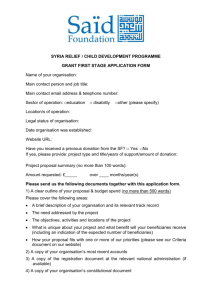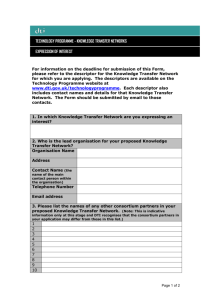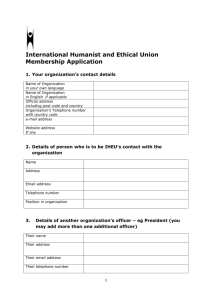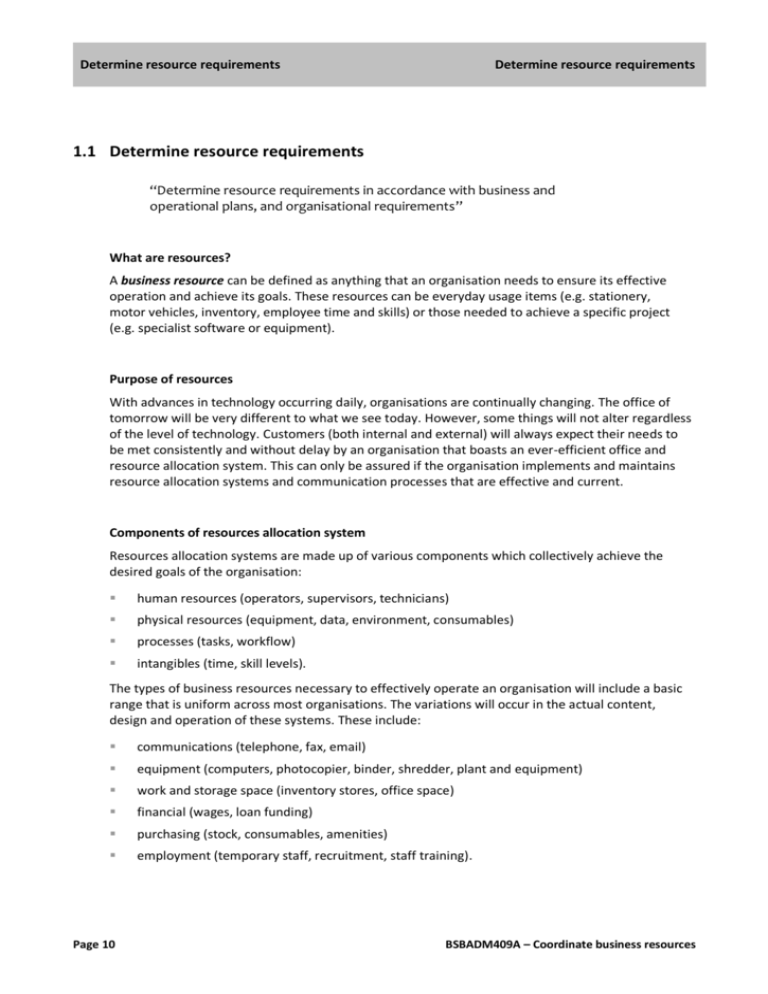
Determine resource requirements
Determine resource requirements
1.1 Determine resource requirements
“Determine resource requirements in accordance with business and
operational plans, and organisational requirements”
What are resources?
A business resource can be defined as anything that an organisation needs to ensure its effective
operation and achieve its goals. These resources can be everyday usage items (e.g. stationery,
motor vehicles, inventory, employee time and skills) or those needed to achieve a specific project
(e.g. specialist software or equipment).
Purpose of resources
With advances in technology occurring daily, organisations are continually changing. The office of
tomorrow will be very different to what we see today. However, some things will not alter regardless
of the level of technology. Customers (both internal and external) will always expect their needs to
be met consistently and without delay by an organisation that boasts an ever-efficient office and
resource allocation system. This can only be assured if the organisation implements and maintains
resource allocation systems and communication processes that are effective and current.
Components of resources allocation system
Resources allocation systems are made up of various components which collectively achieve the
desired goals of the organisation:
human resources (operators, supervisors, technicians)
physical resources (equipment, data, environment, consumables)
processes (tasks, workflow)
intangibles (time, skill levels).
The types of business resources necessary to effectively operate an organisation will include a basic
range that is uniform across most organisations. The variations will occur in the actual content,
design and operation of these systems. These include:
communications (telephone, fax, email)
equipment (computers, photocopier, binder, shredder, plant and equipment)
work and storage space (inventory stores, office space)
financial (wages, loan funding)
purchasing (stock, consumables, amenities)
employment (temporary staff, recruitment, staff training).
Page 10
BSBADM409A – Coordinate business resources
Determine resource requirements
Determine resource requirements
In deciding the types of resources required by a particular organisation, it is necessary to consider
the following:
type of business (professional, manufacturing, service, sales)
intended users of resources (cultural background, education level)
size of the business (sole trader, single site, interstate, international)
geographical location (major city, regional area)
scope of operations (local, international).
The final system will be determined by the individual organisation and its goals and objectives and, in
all cases, should be an effective tool that ensures the effective allocation of resources and achieves
the outcomes required.
The process of co-ordinating the allocation of resources is not a new one. We all perform such tasks
every day as part of our normal lifestyle. Consider the following case study based on today’s lifestyle.
You might personally identify with the scenario!
Case Study
Your child takes part in team sports and it is your turn to ensure that the team’s
uniforms are laundered ready for use at next weekend’s game. To achieve this
goal, you need to prepare a plan of action. In summary, you need to identify
what you need to achieve, what resources you need to do this, how you will
locate and fund these resources, what possible problems might arise and how
you will solve them.
Initially, this plan can be represented as follows:
What needs to
be done?
Why it needs to
be done
Timeframe
How it will be
done
Who will do
it
Dirty uniforms
cleaned
Team needs
clean uniforms
for next game
Next
weekend
Uniforms to
be washed
and dried
You!
Learning activity 1
You are employed by HiTech Electronics. In your role as administration officer,
you have been allocated the task of replacing the current photocopier which no
longer meets the needs of the office staff. The quality of copies is poor, the
output rate is too slow, and it lacks features such as double-sided and colour
printing. You need to prepare an initial plan of action to assist you in this task.
You will add to this plan as we progress through these studies.
What needs
to be done?
Why it needs
to be done
BSBADM409A – Coordinate business resources
Timeframe
How it will be
done
Who will do it
Page 11
Determine resource requirements
Determine resource requirements
Compliance with legislation
You might ask how legislation could affect an organisation’s resources or how they are allocated.
Resources must take into account issues arising from legislation such as Equal Employment
Opportunity (EEO), Privacy Act, Anti-discrimination and Occupational Health and Safety (OH&S). You
should familiarise yourself with the current features of each of these pieces of legislation to ensure
compliance.
Learning activity 2
Use the Internet to find current information on the areas of legislation
mentioned above. List the relevant sites below.
Make some notes relevant to resource allocation for each one and add these to
your portfolio. Discuss with your supervisor some of your findings and how they
might apply in your workplace.
Relevant legislation
Site address
OH&S
EEO
Anti-discrimination
Privacy
Let’s look at a couple of these areas of legislation and how they relate to resource allocation.
Consider OH&S. Many factors can be clearly identified as part of the resources system, such as
working conditions (ergonomic furniture, lighting) and the need for protective clothing (sun
protection, safety boots and goggles). In these instances, specific resources need to be provided
and their use monitored.
In relation to Anti-discrimination, relativity to resources may not seem so clear. Consider the impact
of hours of work on some ethnic groups who need to take breaks at specific times to fulfil religious
beliefs. This will mean allocating duties to make this possible. Another example would be considering
employees with family commitments when planning schedules for overtime and holidays. Take care
to ensure that all employees have the chance to take leave during school holiday periods, not just
those employees who have school-aged children. Make sure that, by taking special care not to
discriminate against employees with family commitments, you don’t disadvantage those who don’t!
You should talk to the person responsible for the allocation of working hours within your
organisation and find out how a good working balance is achieved and maintained.
Page 12
BSBADM409A – Coordinate business resources
Business Services Training
Unit of Competency
BSBADM409A Coordinate business resources
Unit Descriptor
This unit describes the performance outcomes, skills and
knowledge required to determine and analyse existing
and required resources, their effective application and
the accountability for their use.
Employability Skills
This unit contains employability skills.
Pre-requisite Units
Nil
Application of the Unit
This unit applies to individuals with a broad knowledge of
business resources who contribute well-developed skills
and knowledge to ensure adequate resources are
available to perform the work of the organisation.
They may have responsibility to provide guidance
or to delegate aspects of these tasks to others.
Coordinate business resources
This book supports BSBADM409A, Coordinate business resources in the Business Services Training Package.
© Copyright Lyn Graham, August 2009
Author: Lyn Graham
Editor: Sandra Griffith
ISBN: 1-921657-51-0
Disclaimer
All rights reserved. No part of this publication may be reproduced or transmitted in any form or by any
means, electronic or mechanical, including photocopying, scanning, recording, or any information storage
and retrieval system, without permission in writing from the publisher, Software Publications Pty Ltd.
No patent liability is assumed with respect to the use of the information contained herein. While every
precaution has been taken in the preparation of this book, the publisher and the authors assume no
responsibility for errors or omissions. Neither is any liability assumed for damages resulting from the use
of the information contained herein. These learning materials have been prepared for use as part of a
structured vocational education and training course and should only be used within that context. The
information contained herein was correct at the time of preparation. Legislation and case law is subject
to change and readers need to inform themselves of the current law at the time of reading.
Publishers – Software Publications Pty Ltd (ABN 75 078 026 150)
Head office – Sydney
Unit 10, 171 Gibbes Street
Chatswood NSW 2067
Phone: (02) 9882 1000
Fax (02) 9882 1800
Australia Toll Free Numbers
Phone: 1 800 146 542
Fax: 1 800 146 539
Web address
www.softwarepublications.com.au
Published and printed in Australia

